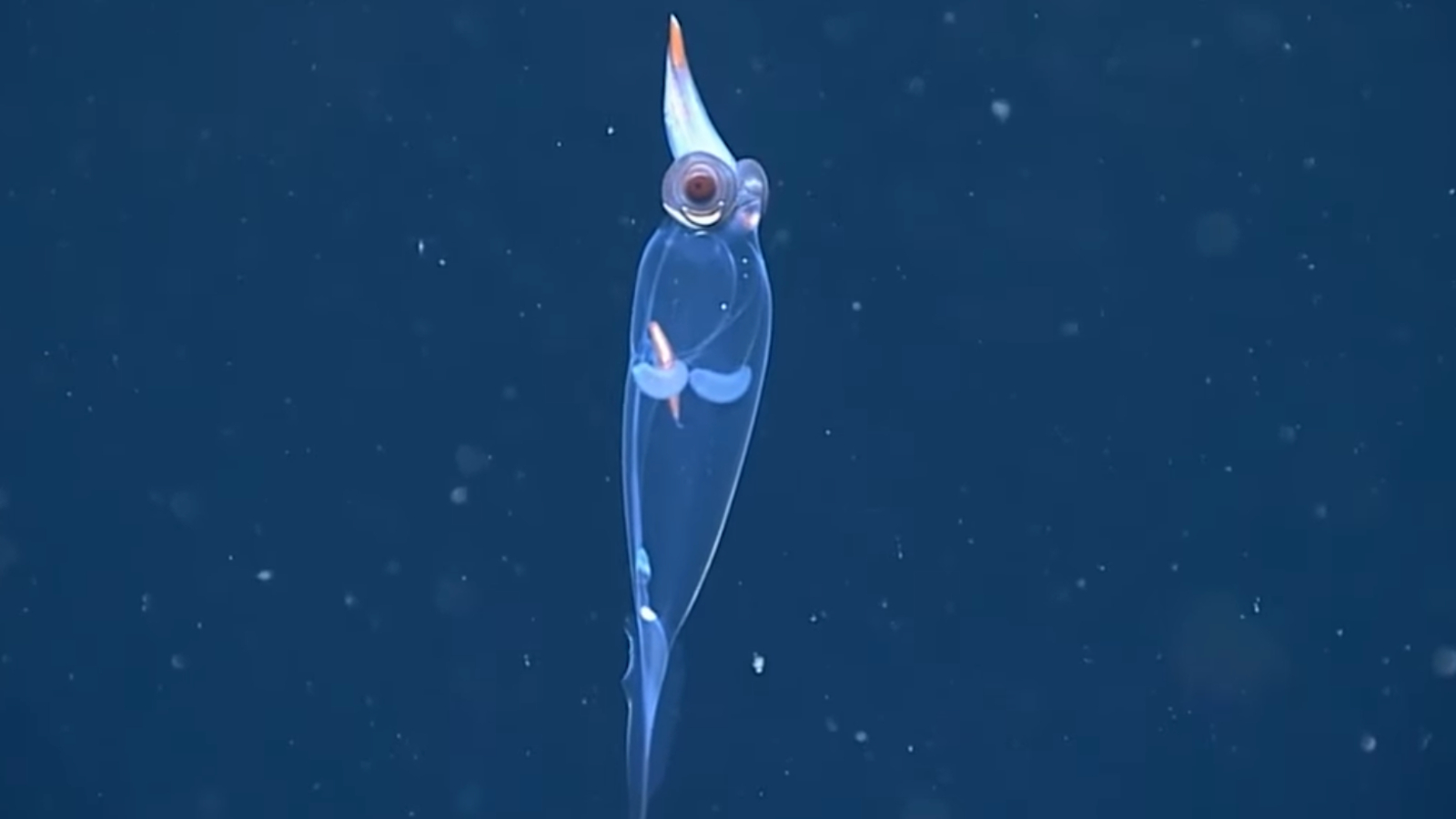Watch a see-through squid with demon-like eyes swim in Alaska's deep waters
The see-through cephalopod was spotted by researchers exploring the deep sea surrounding Alaska's Aleutian Islands.
An alien-looking, see-through squid with demonic red eyes has been filmed in the deep waters off the coast of Alaska.
Researchers from the National Oceanic and Atmospheric Administration (NOAA) Ocean Exploration team spotted the glass squid (Taonius borealis) on July 15 while operating a remote-operated vehicle (ROV) at a depth of around 2,300 feet (700 meters) in the Pacific waters surrounding Alaska's Aleutian Islands. The dive was the first of NOAA's Seascape Alaska 3 expedition onboard the NOAA ship Okeanos Explorer, which aimed to map unexplored areas of the deep sea in the state's exclusive economic zone (EEZ).
Video footage of the encounter shared Aug. 16 on NOAA's Ocean Explorer YouTube channel shows the inverted squid slowly descending through the water, with its mantle — the main part of a squid's body that contains all its vital organs — pointing downward and its small arms appearing to form a single hat-like mass above the eyes at the top of its body. It is unclear how large the squid in the video is, but the species' mantle can grow to a max length of around 26 inches (66 centimeters), according to the International Union for Conservation of Nature (IUCN).
Related: Weird-eyed strawberry squid spotted in 'twilight zone' off California's coast
"This is a fairly common squid in these waters, but the close-up imagery captured here was anything but [common]," NOAA representatives wrote on YouTube.
One of the most striking parts of the new video is the see-through squid's visible internal organs. The largest red-colored organ is the digestive gland. It is flanked on either side by two white sacs, which are the gills.
During the video, there is a brief moment in which one of the squid's eyeballs appears to briefly retract within the surrounding purple discs. This behavior is the equivalent to humans and other animals blinking, NOAA representatives wrote.
Get the world’s most fascinating discoveries delivered straight to your inbox.
The squid also has white crescent-shaped structures beneath each eye. These are photophores, or light-producing organs used to attract prey, including shrimp, small fish and other squid, NOAA representatives wrote.
There are more than 60 known species of glass squid within the family Cranchiidae, and each have at least partially translucent skin. The largest glass squid is the colossal squid (Mesonychoteuthis hamiltoni), which reaches 33 feet (10 m) long and is the heaviest squid in the world.

Harry is a U.K.-based senior staff writer at Live Science. He studied marine biology at the University of Exeter before training to become a journalist. He covers a wide range of topics including space exploration, planetary science, space weather, climate change, animal behavior and paleontology. His recent work on the solar maximum won "best space submission" at the 2024 Aerospace Media Awards and was shortlisted in the "top scoop" category at the NCTJ Awards for Excellence in 2023. He also writes Live Science's weekly Earth from space series.





